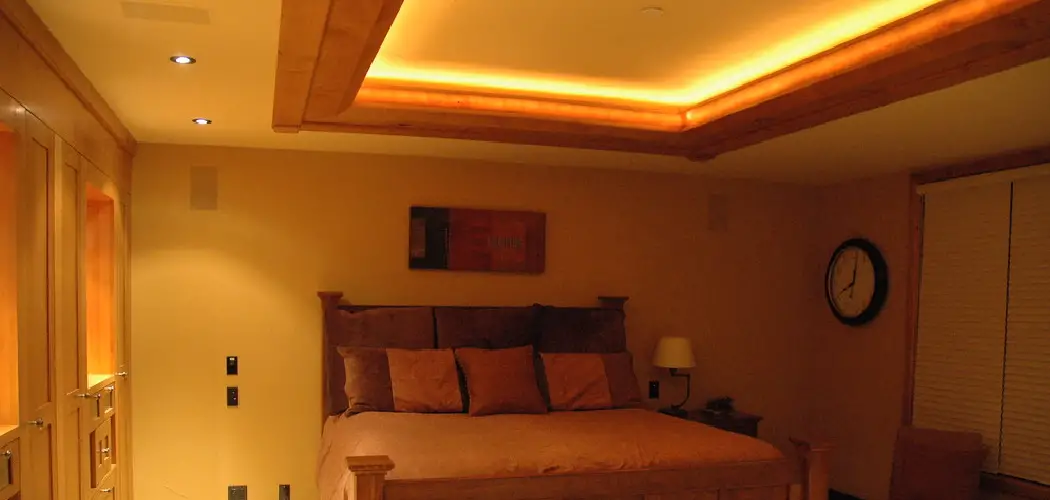Elevating the aesthetics of a room often involves more than just the functional aspect of lighting; it requires a thoughtful approach to design. Recessed lighting, with its sleek and unobtrusive appearance, can be a transformative element when enhanced for visual appeal.
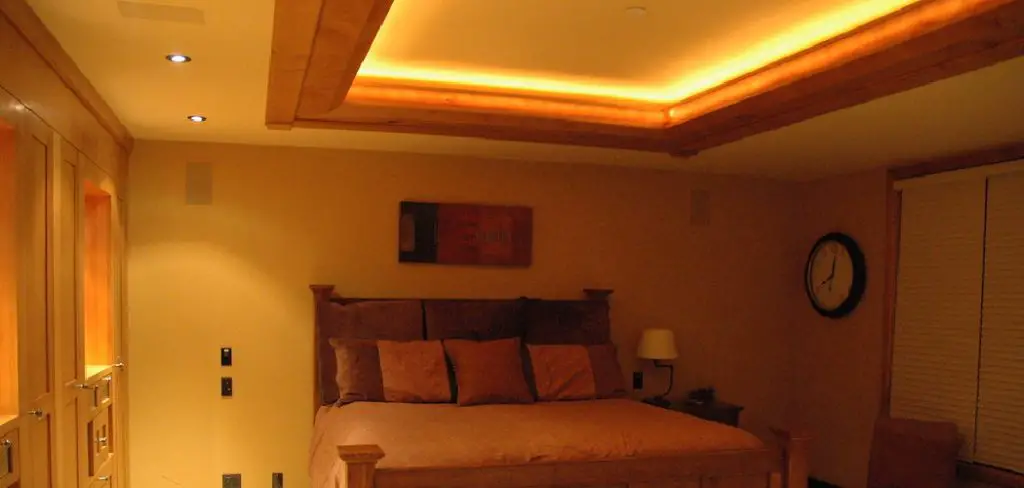
Whether you’re looking to update the ambiance, improve the overall design, or simply make a subtle yet impactful change, knowing how to make recessed lighting look better is key.
This article will explore a variety of techniques and design strategies on how to make recessed lighting look better. From selecting the right trim and bulbs to utilizing accessories and adjusting the placement, these methods aim to empower homeowners and designers to create a harmonious and stylish lighting arrangement that complements the overall aesthetic of any space.
Importance of Aesthetics in Lighting Design
The importance of aesthetics in lighting design cannot be overstated. A well-thought-out lighting plan does more than illuminate a space; it brings the room to life, enhancing its beauty, character, and functionality.
The strategic placement of light and the selection of fixtures contribute significantly to the mood and atmosphere, ultimately affecting how a space is perceived and experienced.
Aesthetically pleasing lighting can transform an ordinary room into a captivating environment, encouraging relaxation, focus, or social interaction as required. Beyond its practical application, lighting serves as an artistic statement, echoing the style and personality of the inhabitants, making it an essential element of interior design.
Purpose of Improving the Appearance of Recessed Lighting
The endeavor to improve the appearance of recessed lighting goes beyond superficial aesthetics. It revolves around enhancing the quality of life within a space, making it more inviting and comfortable. By optimizing the visual aspects of recessed lighting, we aim to create an atmosphere that reflects personal style and meets functional needs.

This includes achieving the right balance of light to avoid harshness or shadowing that can strain the eyes or dampen the mood of a room. Furthermore, upgrading recessed lighting can significantly increase a home’s value by modernizing its look and feel, making it more appealing to residents and potential buyers alike.
Ultimately, the purpose is to craft spaces that inspire, comfort, and cater to the dynamic needs of daily living, through the thoughtful integration of light into the fabric of the room’s design.
Assessing Current Setup
Before making any changes to improve the appearance of recessed lighting, it’s crucial to assess the current setup. This process involves examining the existing light fixtures, their placement, and the overall light distribution in the space.
Considerations should include the type of bulbs being used, the color temperature of the light, and whether the current trim styles complement the room’s aesthetic. It’s also vital to observe how light interacts with the room at different times of the day, as natural light plays a significant role in how a space is illuminated.
Understanding the strengths and weaknesses of the current lighting arrangement helps in identifying areas that need enhancement and in making informed decisions on how to best upgrade the recessed lighting to achieve the desired aesthetic outcome.
Evaluation of Existing Recessed Lighting Fixtures
The evaluation of existing recessed lighting fixtures is a pivotal step in the enhancement process and should be approached with a detailed and critical eye. Initially, assess the condition and quality of the fixtures themselves, considering their age, durability, and any signs of wear or damage that might detract from both their functionality and aesthetic appeal.
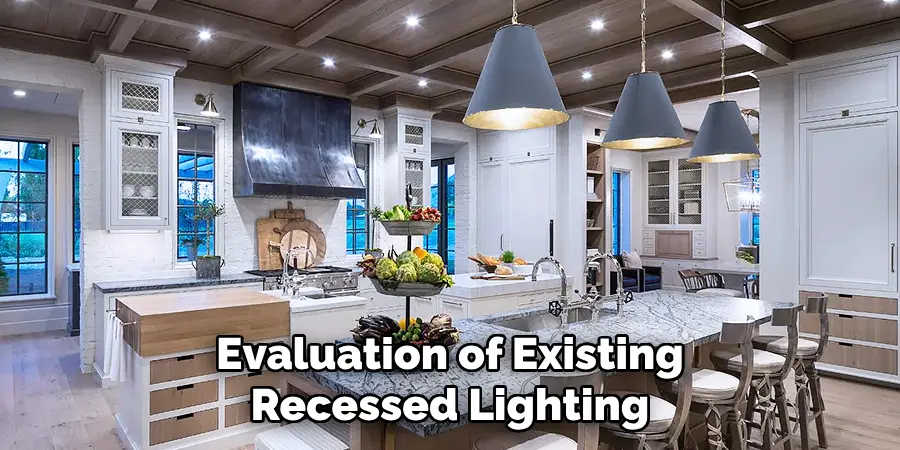
Next, evaluate the compatibility of the fixtures with energy-efficient bulbs, as upgrading to LED bulbs, for instance, can significantly improve the quality of light while reducing energy costs.
This step also involves considering the beam spread of the existing recessed lights, which affects how light is dispersed throughout the room. A narrow beam spread might create a spotlight effect, whereas a wider beam spread provides a more diffuse, ambient light. Adjusting this can dramatically change the room’s atmosphere.
It’s equally important to take note of the color rendering index (CRI) of the bulbs in use; a higher CRI means colors appear more vivid and true-to-life under the light. By conducting this thorough evaluation, homeowners and designers can pinpoint specific elements of the recessed lighting that need updating or replacement to enhance the room’s overall lighting scheme.
Identification of Areas for Improvement
After assessing the current recessed lighting setup and evaluating the existing fixtures, identifying areas for improvement becomes the next critical step. This phase focuses on pinpointing specific aspects of the lighting that can be optimized for better aesthetics and functionality.
Common areas that often require enhancements include the uniformity of light distribution, which ensures that the space is evenly illuminated without dark spots or overly bright areas.
3Upgrading to fixtures that support dimming capabilities can also offer more control over the ambiance of the room, allowing for adjustments in light intensity based on time of day or desired mood. Additionally, the aesthetics of the trim and its compatibility with the room’s design style may need revision. Trims that are outdated or do not align with the current décor can detract from the overall look of the space.
Finally, considering the integration of smart lighting technology may provide added convenience and efficiency, such as the ability to control lighting remotely or customize settings for specific scenarios. By identifying these improvement areas, a plan can be formulated to enhance the recessed lighting, elevating both the functionality and visual appeal of the space.
10 Methods How to Make Recessed Lighting Look Better
1. Choose Appropriate Trim Styles:
The type of trim you select for your recessed lighting can significantly impact its visual appeal. Opt for trim styles that complement the overall design of your space. Consider options such as baffle trims for reduced glare, reflector trims for enhanced brightness, or decorative trims to add a touch of elegance.
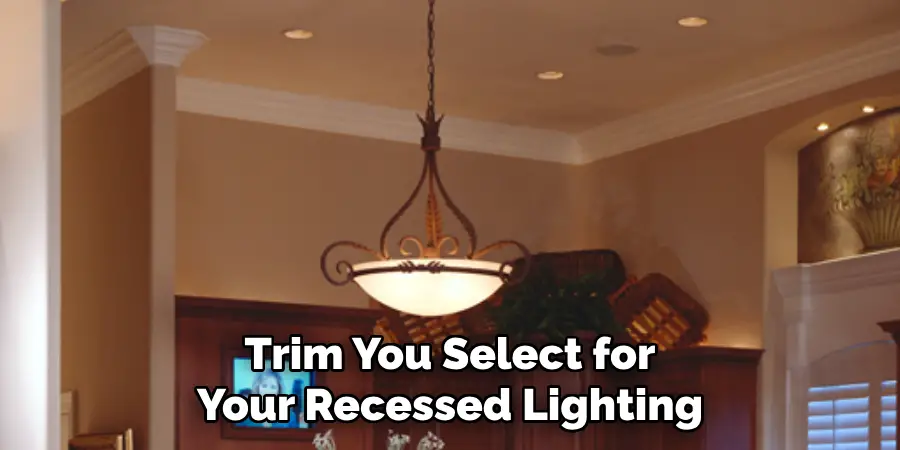
Additionally, choose a trim color that blends well with the ceiling or creates an attractive contrast. To make your selection process easier, you can also consult with a professional or browse through different styles online to find the perfect fit for your space.
2. Experiment with Trim Finishes:
Beyond the trim style, the finish of the trim can also contribute to the aesthetics of your recessed lighting. Chrome, brushed nickel, and white finishes are popular choices, each offering a different visual impact. Choose a finish that aligns with your room’s color scheme and design elements.
Some other options for trim finishes include black, bronze, and brass. These finishes can add a touch of elegance or contrast to your recessed lighting design. For a more natural look, consider wood or bamboo finish trims.
When experimenting with trim finishes, keep in mind the type of lighting effect you want to achieve. A shiny chrome finish will reflect light and create a brighter atmosphere, while a matte white finish will diffuse light and create a softer ambiance.
Additionally, consider the style of your room when choosing a trim finish. A modern and sleek room may benefit from a chrome or brushed nickel finish, while a rustic or farmhouse-style room could benefit from a wood or bronze finish.
3. Use Adjustable Trims for Flexibility:
Adjustable trims provide the flexibility to direct light where it’s needed, allowing you to highlight specific features or create a dynamic lighting arrangement. These trims are ideal for showcasing artwork, architectural details, or focal points within a room. They also allow you to control the direction and intensity of light, so you can adjust the ambiance depending on the occasion.
In addition to their practical function, adjustable trims can also add a touch of style to your lighting fixtures. They come in a variety of colors and finishes, allowing you to customize the look of your fixtures and coordinate them with your overall design aesthetic.
Whether you prefer a sleek and modern look or a more traditional and ornate style, there is an adjustable trim to match your preferences.
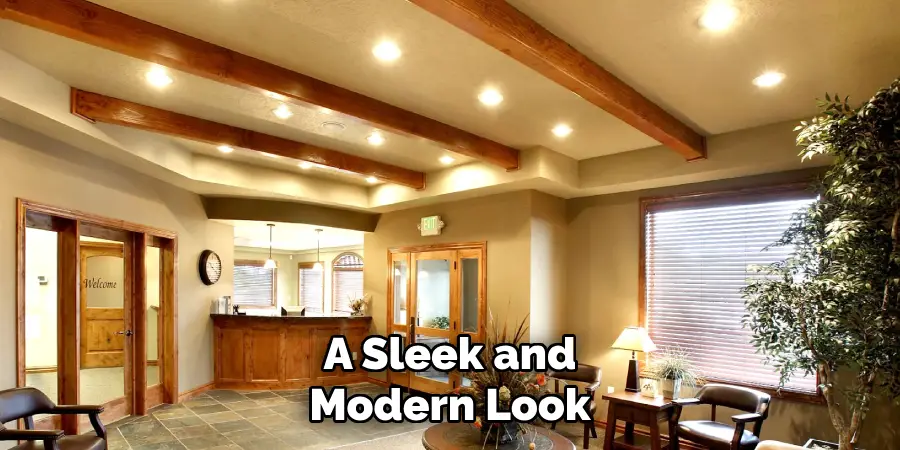
Moreover, adjustable trims offer versatility in terms of the type of light they can produce. You can choose from various beam spreads, including narrow spotlights for focused lighting and wider floodlights for broader coverage. This allows you to create different moods and effects within a space, from highlighting a specific area to providing general ambient lighting.
4. Consider Decorative Recessed Lighting Covers:
Decorative covers or shades designed for recessed lighting can instantly elevate its visual appeal. These covers come in various styles, from contemporary patterns to classic designs, and can be easily installed over existing recessed lights to add a touch of sophistication and uniqueness to the room.
Some decorative covers are made with materials like glass, plastic, or fabric to diffuse the light and create a soft, warm glow. These covers can also help reduce glare and harsh shadows caused by recessed lights, making them more comfortable for extended use. Additionally, some covers feature intricate cut-out designs that cast beautiful patterns on the surrounding walls and ceiling when illuminated.
Aside from their aesthetic benefits, decorative recessed lighting covers can also serve as a practical solution for spaces with high ceilings. By choosing a cover with a reflective surface, you can redirect light downwards and brighten up areas that might otherwise be dimly lit.
5. Utilize Color Temperature and CRI:
Pay attention to the color temperature and Color Rendering Index (CRI) of your recessed lighting bulbs. Opt for warmer color temperatures (around 2700K) for a cozier ambiance, and choose bulbs with a high CRI to ensure accurate color representation, making your space look more vibrant and inviting.
Color temperature refers to the color appearance of light, which is measured in Kelvin (K). Lower color temperatures result in warmer tones like orange and yellow, while higher color temperatures give off cooler tones like blue and white. The right color temperature can greatly impact the mood and atmosphere of a room.
CRI, on the other hand, measures how well a light source renders colors compared to natural light. The higher the CRI, the more accurate colors will appear under that light source. Ideally, you should look for bulbs with a CRI of 90 or above for the most realistic color representation.
6. Install Dimmer Switches for Control:
Enhance the versatility of your recessed lighting by installing dimmer switches. Adjusting the brightness levels allows you to create various moods and atmospheres in the room.
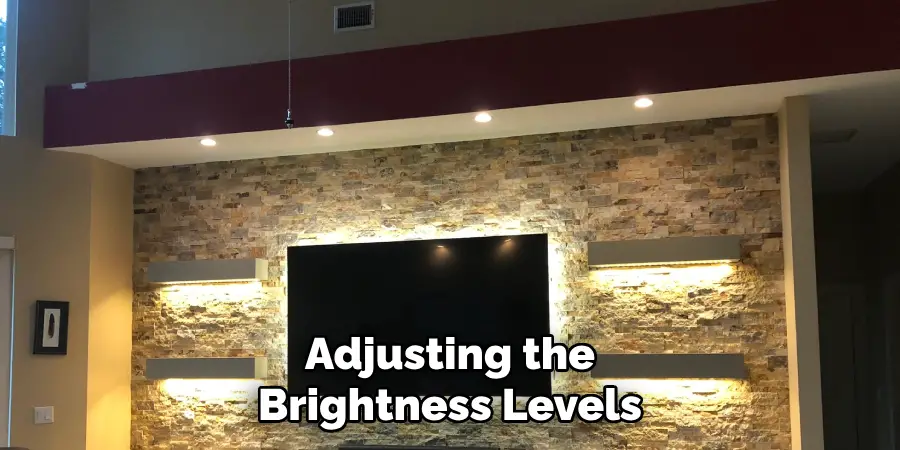
Dimming the lights can also extend the lifespan of your bulbs and contribute to energy savings. Although the process may seem daunting, it is actually quite simple and can be completed in a few steps.
7. Create Layers with Multiple Light Sources:
Combine recessed lighting with other light sources, such as pendant lights, wall sconces, or floor lamps, to create layered illumination. This multi-source approach not only enhances visual interest but also provides flexibility in adjusting lighting levels based on different activities and occasions.
For example, you can use recessed lights for general ambient lighting while using wall sconces or pendant lights to highlight specific decor pieces. You can also dim certain light sources for a cozy and intimate atmosphere. Although layering multiple light sources may seem daunting, it can be easily achieved with the help of a professional electrician.
8. Optimize Spacing and Layout:
The proper spacing and layout of recessed lights are crucial for achieving a balanced and visually pleasing result. Avoid overcrowding or leaving gaps between fixtures.
Follow general guidelines for spacing based on the size and height of the room, ensuring uniform and effective lighting distribution. Consider using a layout tool or consulting with an electrician for best results.
When it comes to spacing, the general rule of thumb is to have recessed lights placed around 4-6 feet apart. However, this can vary depending on the size and height of the room. For example, in larger rooms or spaces with higher ceilings, you may need to space out fixtures further to avoid having too many lights in one area. On the other hand, smaller rooms may need more closely spaced fixtures for adequate lighting coverage.
In addition to spacing, it is also important to consider the layout of your recessed lights. This refers to the arrangement and positioning of the fixtures throughout the room. A common mistake is placing all of the lights in a straight row or grid pattern, which can create an unbalanced and harsh lighting effect.
9. Use Accessories like Light Shields:
Consider installing light shields or baffles to minimize glare and control the direction of light. These accessories not only improve the aesthetics of the recessed lighting but also contribute to a more comfortable and visually appealing environment by preventing harsh reflections.
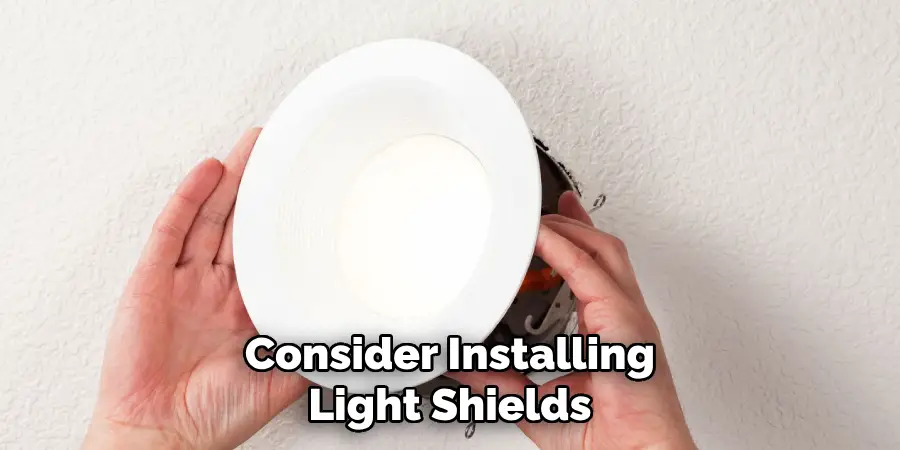
Light shields are usually made of metal or plastic and can be installed over the light source to direct the light downward. Baffles, on the other hand, are designed to block light from entering directly into the line of sight. This allows for more even distribution of light without any harsh glare.
These accessories can also help reduce energy consumption by directing more light to where it is needed, rather than having it scattered in all directions. Some light shields and baffles are also designed with reflective surfaces to maximize the output of light.
When choosing accessories for your recessed lighting, make sure to check their compatibility with the type of fixture you have installed. Some manufacturers may offer specific accessories designed for their fixtures, while others may provide universal options that can fit a variety of fixtures.
10. Integrate Smart Lighting Controls:
Embrace the convenience and customization offered by smart lighting controls. Smart dimmers, color-changing capabilities, and programmable scenes allow you to tailor the lighting to suit different activities, seasons, or times of the day, adding a modern and sophisticated touch to your recessed lighting design.
These smart controls can also be connected to your home automation system, giving you the ability to control and monitor your lighting from anywhere in the world.
With smart lighting controls, you can easily create mood lighting for different occasions. Hosting a dinner party? Simply set the lights to a warm and dimmed setting to create an intimate and cozy atmosphere. Want to energize your morning routine? Adjust the lights to a bright and cool setting to help you start your day off on the right foot.
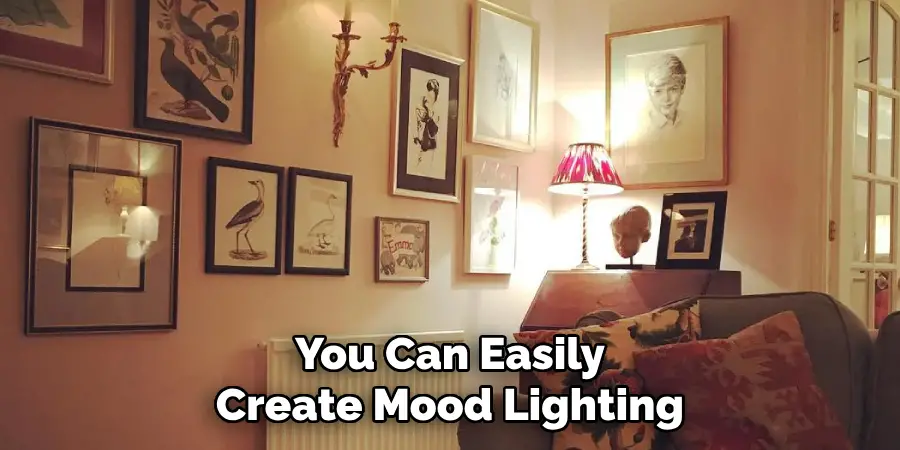
In addition to creating ambiance, smart lighting controls also offer energy-saving benefits. With features like motion sensors, timers, and remote control capabilities, you can ensure that your lights are only on when needed.
Conclusion
In conclusion, transforming the appearance of recessed lighting can greatly enhance the overall ambiance and aesthetic appeal of any space. By carefully assessing the current setup and considering factors such as trim options, light placement, bulb selection, and decorative elements, individuals can create a more visually pleasing environment.
Upgrading trim styles, adjusting light direction, and incorporating decorative elements allow for customization and personalization to suit different room styles and preferences.
Concealing wires and junction boxes also contribute to a cleaner and more polished look. Hopefully, this article gave you some helpful tips about how to make recessed lighting look better successfully, so now that you have the proper knowledge on how to get the job done, why not give it a try today?

